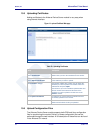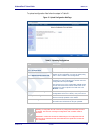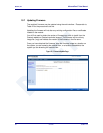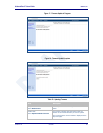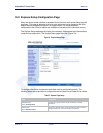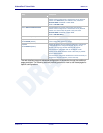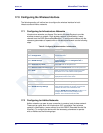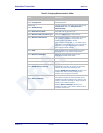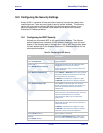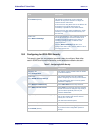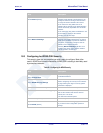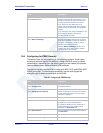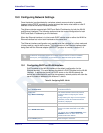
Quatech, Inc. AirborneDirect™ User Manual
56 2/21/2011 100-8510-110
17.0 Configuring the Wireless Interface
The following section will outline how to configure the wireless interface for both
infrastructure and AdHoc networks.
17.1 Configuring for Infrastructure Networks
Infrastructure networks use Access Point and/or Wireless Routers to provide
wireless access to a network. Each wireless network is identified by a name
referred to as the SSID (Service Set IDentifier). To configure the device with the
necessary parameters to operate with an Infrastructure network use the following
steps.
Table 24 - Configuring Wireless Interface - Infrastructure
Step
Description
Navigation Bar
Select Configuration
You will see a group of fields under the banner of
WLAN Parameters.
Feature Link
Select WLAN Settings
This step is optional. The default home page for the
Configuration link in the Navigation Bar is
WLAN Settings.
Select Radio Startup Mode
Select On from the drop down list.
Select Wireless LAN Connection Type
Select the Infrastructure form the drop down list.
Select SSID
Enter the name of the wireless network you want
the device to use. This cannot include spaces.
Select Wireless LAN Region
Select the most appropriate region for the
deployment location of the device.
Press Commit [Button]
Saves changes to the device.
Press Reload [Button]
Reloads the WLAN Settings page.
Feature Link
Select WLAN Security Settings
The wireless interface is now configured however
most wireless networks use security to protect the
network and users from unauthorized use.
Selecting WLAN Security Settings will allow us to
configure the devices security settings for the
network. This is covered in section 18.0.
17.2 Configuring for AdHoc Networks
AdHoc networks use peer-to-peer connection to create a local wireless network.
These can be useful when no infrastructure (AP) is available. Each wireless
network is identified by a name referred to as the ESSID (Extended Service Set
IDentifier). To configure the device with the necessary parameters to operate
with an AdHoc use the following steps.



